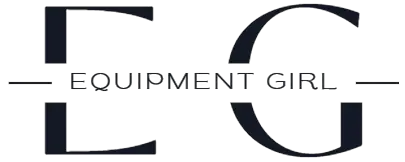Are you considering buying a new hedge trimmer? If so, you’re probably doing some research, which is wise: there are many different models to choose from, and it’s best to get one that suits your needs.
During your search you might have noticed that there are single-sided hedge trimmers and double-sided hedge trimmers, and you’re wondering, like I did, what that’s all about?
Don’t panic, as I will explain all in this guide!
So, What Exactly Are Double-Sided Hedge Trimmers?
The ‘double-sided’ part refers to the blades, which have sharpened teeth on both sides. It’s as simple as that!
However, if you’re anything like me, you’ll want to know more, so I’ll go into further detail below.
Why Have Double-Sided Machines?
Essentially, it’s all about making your life easier. As you sweep the double-sided blades across the jungle that you call ‘the hedge’, you have the freedom to move your arms up or down and side to side as you cut.
I found that this makes it easier to control the machine and get a smooth, even shape to the hedges.
And if you’re feeling really creative you can try your hand at topiary!
Cutting Action Explained
It’s easy to confuse the idea of double or single-sided blades with that of double or single cutting action, but they are not related.
All hedge trimmers have two blades that sit on top of each other. They are described as reciprocating, which means they move against each other to make a scissor action that slices through leaves and twigs.
With single cutting action, one blade is fixed in place and does not move, while the other type uses two moving blades. Of the two types, the double cutting movement is generally better as the cut is cleaner and more effective. Also, the two blades cancel out the vibrations made by each other, making it more comfortable to use.
As a result, hedge trimmers with one fixed blade tend to be cheaper and easier to maintain, though they’re not necessarily better.
Single-Sided Hedge Trimmers
If double-sided hedge trimmers are so great, why make those with single-sided blades?
These models only have teeth on one side, leaving the other edge completely useless, so what’s the point of that?
In my experience, most of the hedge trimmers out there are double-sided, and you’ll rarely see single-sided hedge trimmers on sale – at least in the mainstream outlets that sell to ‘normal’ gardeners like you and me.
That’s because single-sided hedge trimmers are, in the main, used in a commercial capacity by contractors and landscape professionals who handle large-scale projects on a regular basis. These workers often have to cut long straight sections, so having a longer blade on a single side is an advantage as they can move along in a continuous line.
Single-sided hedgetrimmers are also usually lighter in weight so the blade can be made longer without messing up the balance. This means they can be held for long periods without too much discomfort.
Single-Sided Or Double-Sided Hedge Trimmer: Which Should I Choose?
Come on, be honest; hedge trimming isn’t one of those jobs that most of us exactly ‘enjoy’, is it? Even so, I personally see it as a challenge, and while it can be hard work I get a real sense of satisfaction when the job is done and the hedges around my garden look crisp and neat again.
And to do this, I use a double-sided hedge trimmer.
Of course, it’s up to you which one you go for, but here are some bullet points to help you decide which is best for you:
Single-sided Hedgetrimmers
- Longer blade
- Relatively lightweight
- More space between each tooth
- Potentially safer (only one cutting side)
- Good for high and low hedges in long straight lines
- Better for heavy workloads over long periods
- Usually more powerful (most will have petrol-powered engines)
- Many are fitted with clipping collectors
Double-Sided Hedgetrimmers
- Increased flexibility
- Better for small to medium jobs (as opposed to mazes!)
- Much more versatile
- A wider range to choose from, including battery-powered, cordless, electric and petrol-driven models.
- A pole hedge trimmer can be used for high hedges (instead of climbing a ladder!)
- Gets the job done quickly
Overall, for general purpose gardening, the double-sided hedge trimmer is your best bet. For small garden plots, a good-quality electric trimmer will do the trick. And if you have a medium-sized or large garden, a cordless battery-powered machine will be perfect.
For the larger plot, where you need some extra oomph, you might want to get a petrol-driven hedge trimmer. Worried about all that shaking? Many modern machines are fitted with anti-vibration technology.
Hopefully, this guide has cleared up the confusion. Now you have no excuse, so go choose your hedge trimmer and get cutting!


